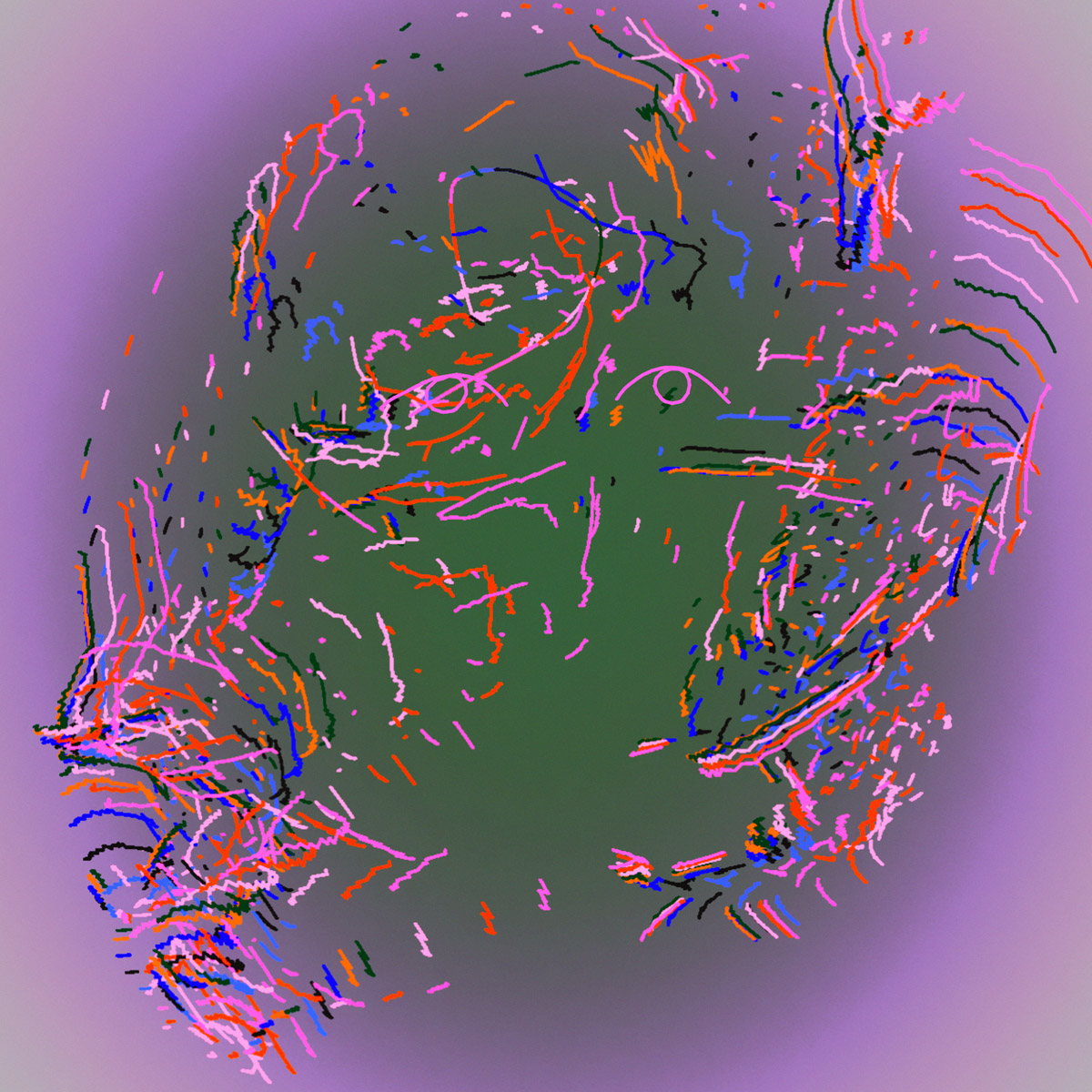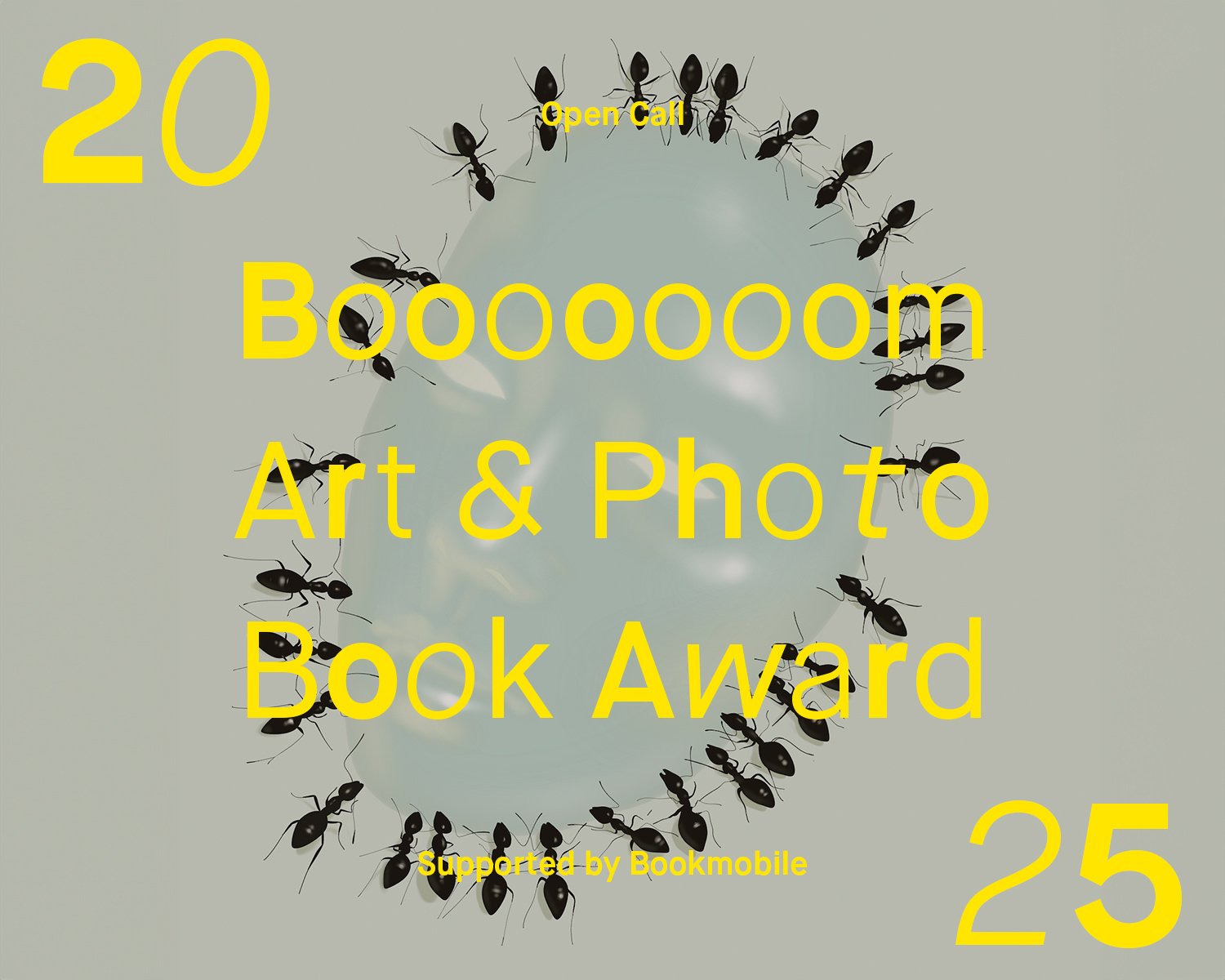Today the National Film Board of Canada is launching Brainstream, an intimate and offbeat interactive animated film, written and directed by Caroline Robert. As the film begins we find ourselves inside the mind of a young girl who is livestreaming her brain activity during a new kind of treatment. Viewers can actually massage the character’s brain and immediately see how it affects her thoughts.
I had the chance to interview Robert about the project, and it was only when I was researching her that I realised how much of her past work I knew and loved—I had no idea the same person was involved in all of them. Do yourself a favour and go look at everything in her portfolio. Not just her work for Arcade Fire (which she won a Grammy for) but also the public art installations and experimental films. Inspiring stuff!
Jeff Hamada: Your work often feels simultaneously lo-fi and high tech, can you talk a bit about your unique aesthetic?
Caroline Robert: You tell me! Ha ha ha!! I like to make things by hand and use different analog and digital techniques to alter things. Taking photographs of a drawing or an image on a screen, playing with lenses, printing, scanning, xerox photocopying… mainly because I like experimenting but also because I have the feeling that reinterpreting things gives it some kind of a history and allow us to look at it through our own personal lens, depending on the medias we grew up with (printed images or photographs, TV, internet culture…). I’m basically drawn by images that have a timeless aesthetic. When you cannot tell if they were made in the past or came from the future. As if it was someone’s memory we just uncovered from a time that we cannot identify.
Also, we craft all our projects for people to play with it. So technology is often the tool that allows us to create an encounter between a piece of art and someone. And when I say technology, I mean using code to create an interactive online film, but I also mean for example printing on holographic board so it will always look different depending on the light in the room you’re in (Reflektor artwork).
In my interactive animation film Brainstream, most of my animations are based on hand drawings on paper. And I asked my programmer Édouard Lanctôt-Benoit to code a tweening engine so people could mess with those drawings in real time on a browser. Simple expressive drawings which come to life thanks to web technologies.
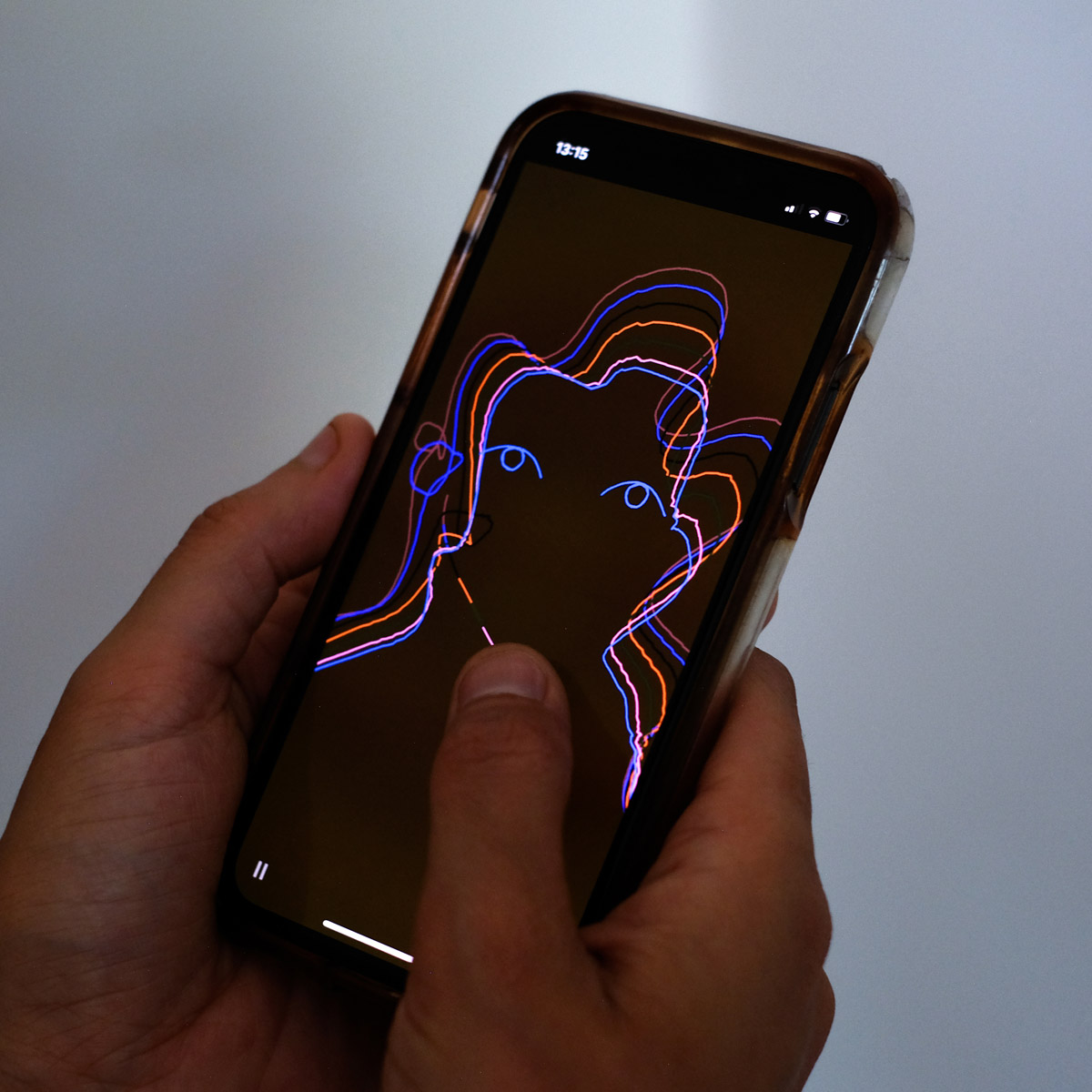
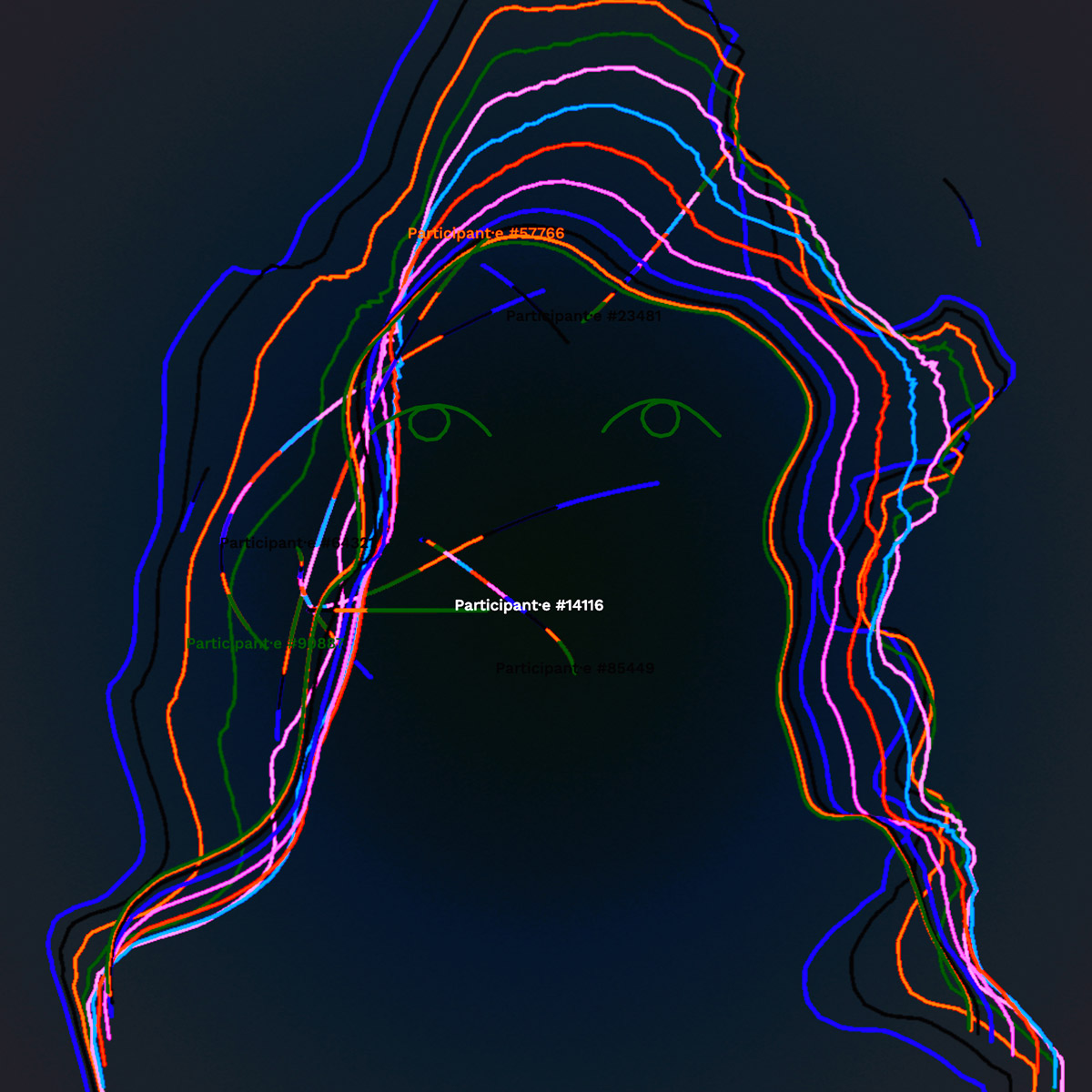
When you first started to make things, who or what was inspiring you?
I’m from France but I live in Montréal now, and I spent the last 2 years of my studies (in 2004-2005) having a lot of fun with my friend Stéphane Buellet who loved Processing and was a big fan of John Maeda, that’s how I first got interested in interactivity.
And we were both big fans of the mesmerizing flash animations done by Presstube (James Paterson). His animated loops almost felt like they were straight manifestations of his own brain. His approach of drawing as a living matter is something that really inspired me in my last project.
In Brainstream I wanted the participants to really feel that the animations actually ARE the brain waves of my character. To give a physical form to her thoughts, to make it tangible. In the film, the drawings are like a living matter that reacts to your touch in real time and transforms continuously in a fluid and unpredictable fashion, unconstrained by a timeline. Some kind of electro-magnetic signal that is attracted by your touch and evolves accordingly to the velocity of your movements.
Last but not least, Vincent Morisset, founder of Studio AATOAA, is my partner in life and in work. I’m always amazed by his brain!! He is a visionary that crafted groundbreaking interactive pieces (films, games, public art) using the internet’s possibilities and a perfect mix of art and technology.
There are so many great artists that inspired me a lot when I was studying, the first that comes to mind is Paul Cox… but when I started working, most of the things that inspired me were related to research that I did for my projects, so I spent most of my time reading wikipedia pages, doing google searches, watching youtube tutorials or beautiful things like sand simulations of tectonic plates (for our project Bridge-Bench).
Bridge-Bench
Bridge-Bench
I was obsessed with James Paterson’s work around the time he was working with Buck65. Brainstream definitely feels like it’s from the same universe. I love seeing how something like those sand animations directly inspires a project like Bridge-Bench. Who or what are you looking at now?
When I had my daughter I started to read a lot about the Brain. Baby brain first, but then adult brain during pandemic. I wanted to understand how it works. How we experience fear, pain, joy, dementia, anxiety or depression (New Scientist – The Human Brain, The Body Keeps the score…) and I was totally fascinated by its plasticity, its capacity to change by learning.
I was also reading a lot of Sci-Fi novels by William Gibson, just to name one. And those readings made me ask myself the question that led me to do Brainstream: What if all the energy we spent on our screens every day could be turned into something useful that could help someone?
Now that I can reflect on the past 10 years I realize that everything that I do is basically the result of the 3 movies that I saw the most as a child, that are printed vividly in my mind, and Brainstream is a pretty good combination of the 3:
Popular science that makes the invisible tangible, Il était une fois la vie…. mixed with the power of the imagination that makes the ordinary so beautiful, Mary Poppins… to serve a story that talks about human resilience and capacity to change. A quest that begins from within, by going on an introspective adventure. With a Sci-fi twist, because I love it! Total Recall (The one directed by Paul Verhoeven).
Sounds really deep, said like that! Ha ha ha!! But the film is actually quite silly in a good way and I’m proud of that because it makes it really approachable even if it has an artistic twist and if it is interactive.
I want to make artistic projects that talk to everybody, not only art lovers because to have access to art can be a privilege when you are a kid. That’s why I loved those films so much, because they were mainstream films on TV, and those worlds opened my mind.
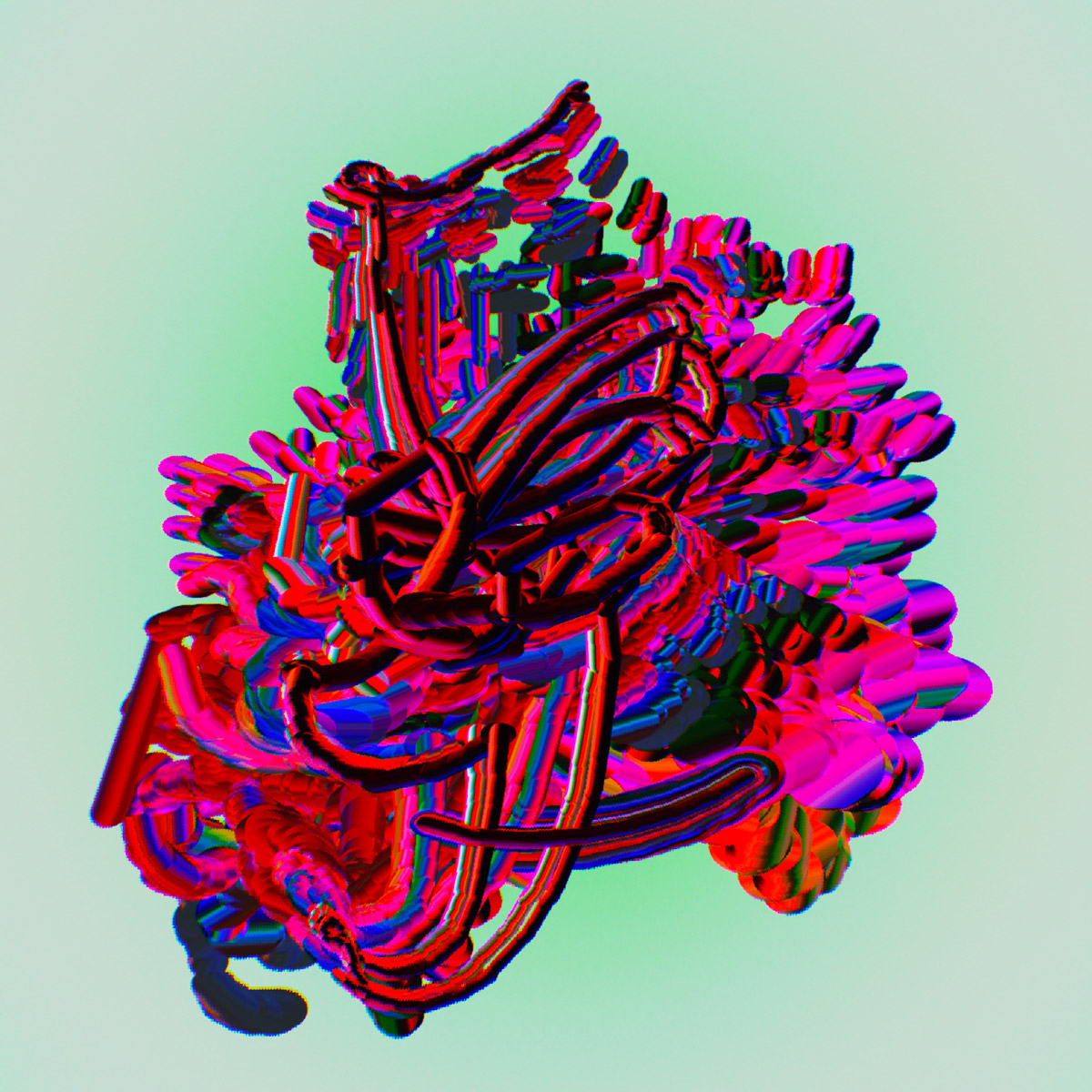
Do you feel you have more of a designer’s brain or an artist’s brain? Or perhaps another way to ask this is, do you like problem-solving or problem-creating?
Definitely problem-creating! I studied in sciences before switching to design and I’m not a specialist, I’m a generalist, and I like to try and learn new things. So I would say that I have a scientific brain that loves art and design and animation and photography and editing and set design…
We always work by trial and error. And Errors are often kept in the projects because they are beautiful. A lot of projects that we did are based on things that we wanted to experiment with but also on experiments that failed in previous projects but were still in the corner of our minds.
For example, Brainstream is based on an experiment we did more than ten years ago with Vincent and Edouard. We wanted to do a non linear 2D animation so I drew a wheel of animated drawing that looks like a pizza. But we quickly abandoned this direction because it was too limited by the quantity of drawings I was able to make. But this failure was the basic idea of creating the tweening tool that would allow any drawing to morph into another at any time.
A “real” animator might be thinking: “omaigode is she actually doing a “TWEEN SHAPE??” And my answer is: Yes, it’s a tween shape, and it’s beautiful like our unpredictable brains. And no it’s not a default tween, Edouard coded a kickass tool that runs online with a lot of variables to adjust the morph for each scene.
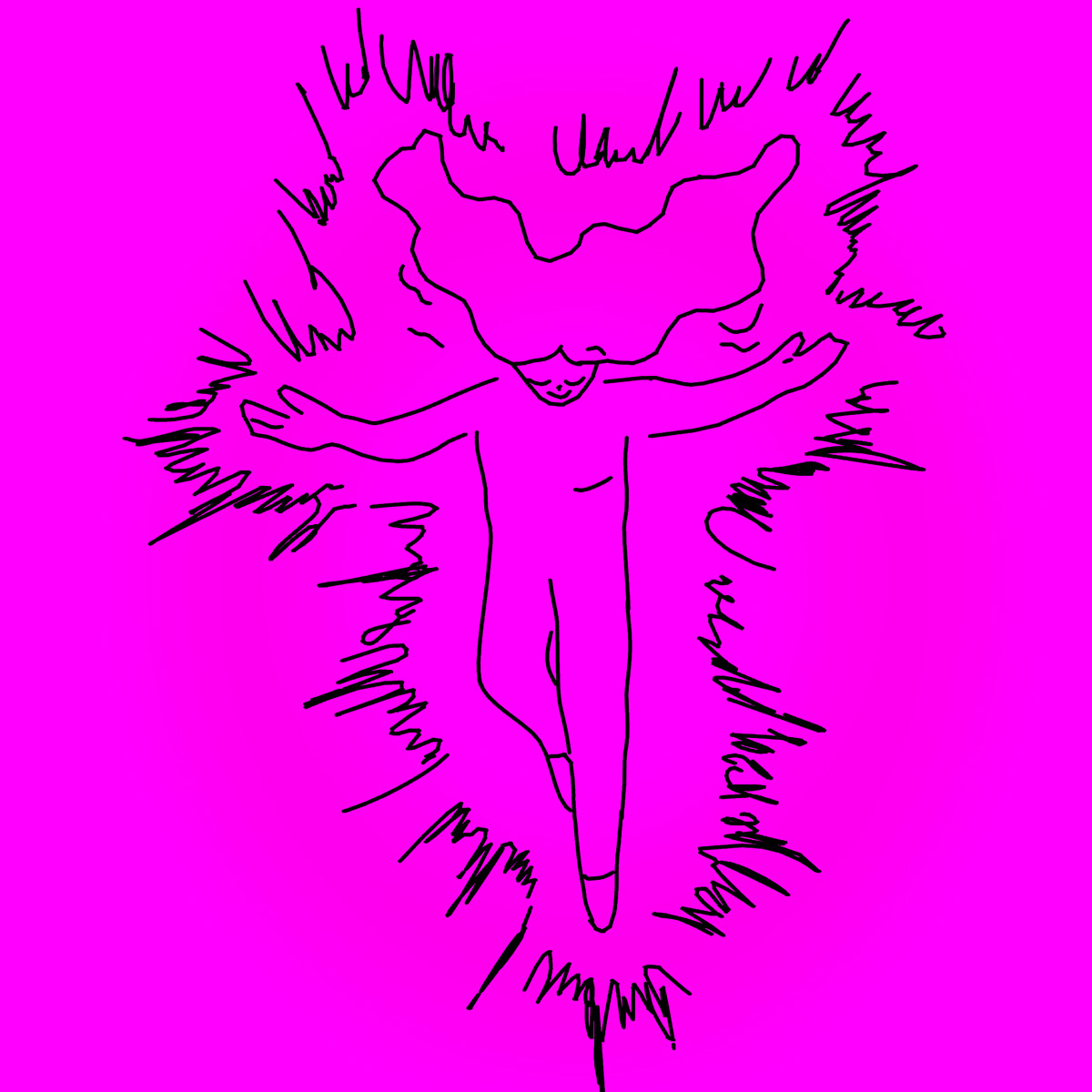
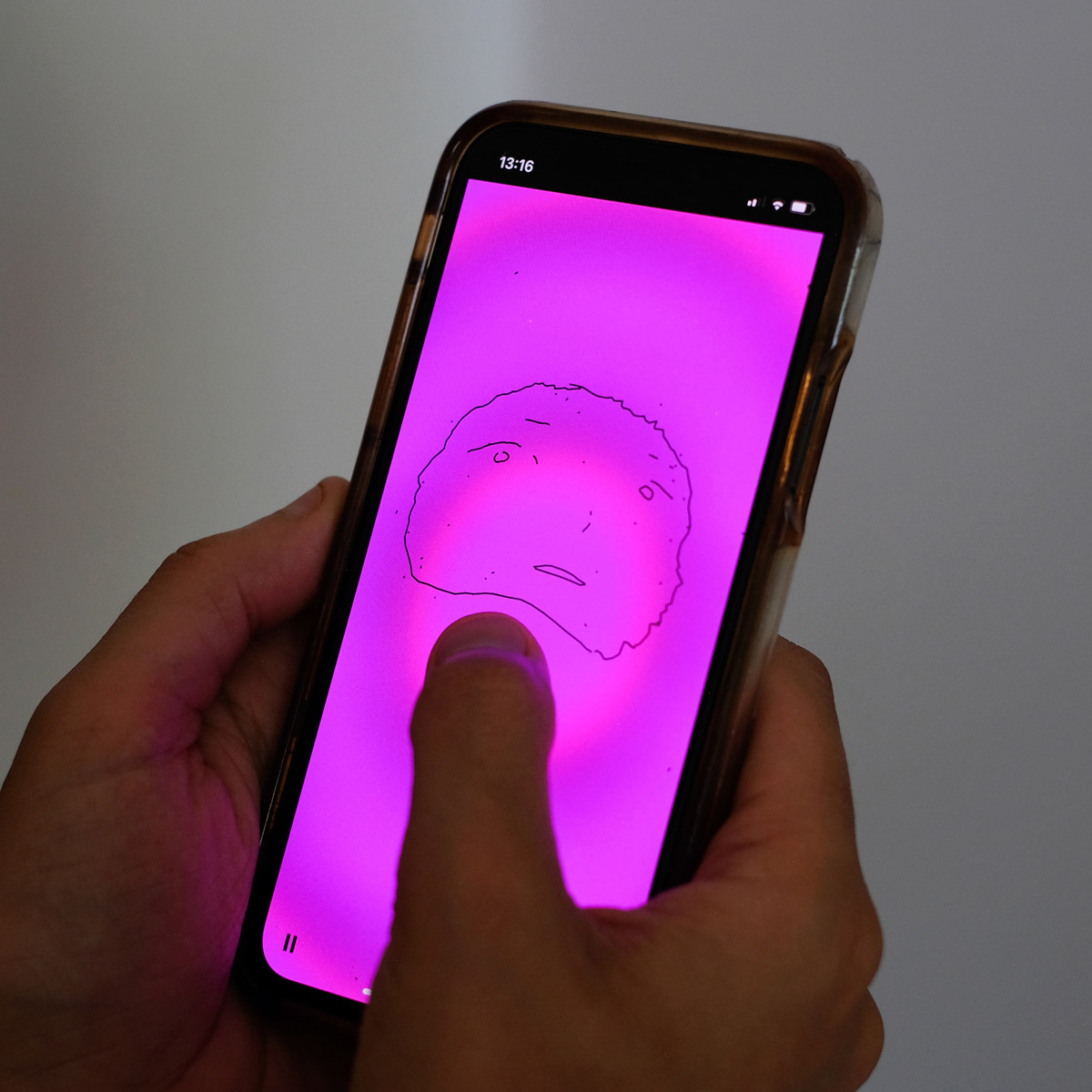
Tell me more about studio AATOAA and what it’s been like working with Vincent Morisset for so many years. I know he has described the way you work together as almost telepathic.
We have been working together for almost 15 years now. We really get each other artistically so it’s easy for us to know what the other has in mind. Vincent is also really good at sizing people’s strengths and giving them room to be the best they can. Just enough lead to put you on a path but a lot of trust to let you try things to push an idea further. He has a lot of intuition and always uses technologies for a purpose, not just for the sake of innovation. He is a visionary and each project is alway an amazing playground with new exciting challenges!
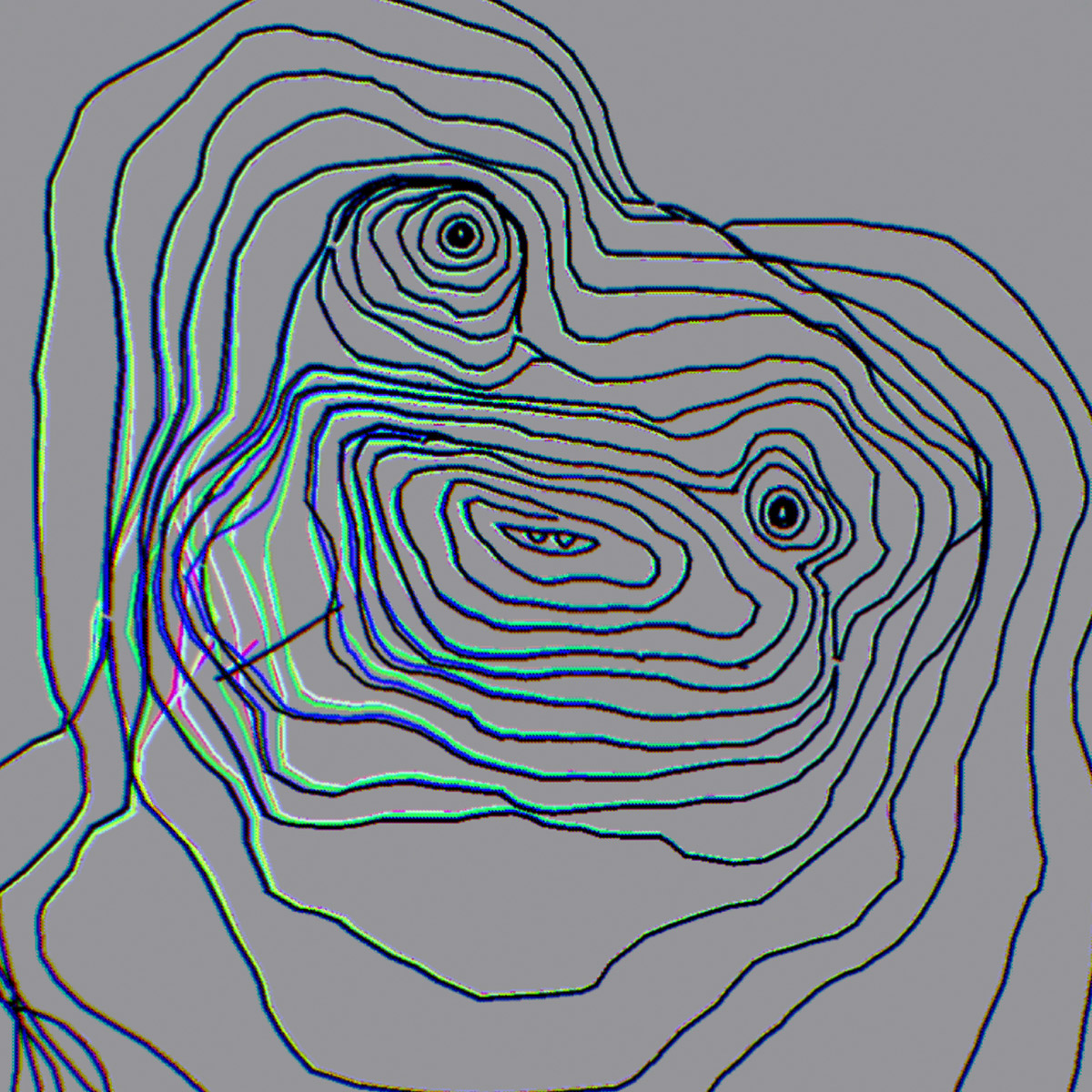
I think the first time I Googled you and Vincent was when Arcade Fire’s Reflektor came out. I’d love to know how you came up with the Reflektor symbol? It’s the kind of image that immediately gets stuck in your mind.
I’m glad you say that because this was my first intention when I was trying to come up with the symbol.
I wanted to do something that felt like it always existed. As if it had been found as is, on a wall, or a doodle drawn half consciously on a piece of paper while talking on the phone.
I didn’t want it to look impressive or slick or perfectly designed. I wanted something that was so simple that anybody could draw it. I wanted people to reappropriate it and make it their own and I was impressed by how Arcade Fire fans got creative with it on social media. It was quite touching to see this simple chalk drawing sealing the Arcade Fire community together.
It definitely felt like something that had always existed, that’s a perfect way to describe it.
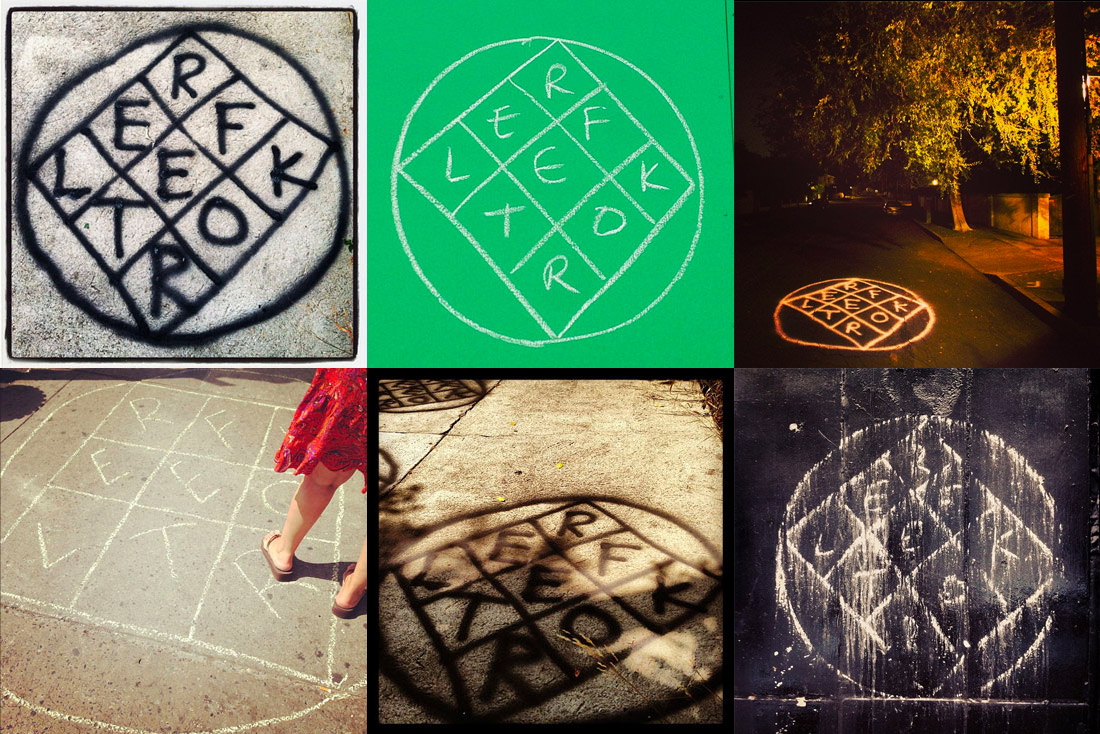
What were some of the biggest challenges or obstacles you encountered during the project?
It is the first film that I’ve written and directed so this was intimidating but I really enjoyed both hats. The biggest challenge was to create a character that would sound real, accurate and create a sense of proximity with her. So I worked with a researcher who interviewed young girls from different backgrounds. I wanted to hear the way they talk and also what was on their mind. What’s making them angry or what are they passionate about… This was really helpful when writing the monologue.
Another challenge was to compose with people’s attention span. Last year we released a beautiful film/book scavenger hunt to do on your phone, called MOTTO. It’s 6 chapters of about 15 minutes, which is far less than the time we spend on social media or binge watching series or playing video games, but we realized that people got scared by the length of this unidentified piece.
In Brainstream Vincent came up with this idea of giving 2 choices of durations. The idea is to let you choose what brain space you have at the moment for this film, but also to encourage you to give it a try for 5 min. At the end of the 5 minutes, you can then decide to continue if you want to see more, or to stop without having the feeling that you lost your time.
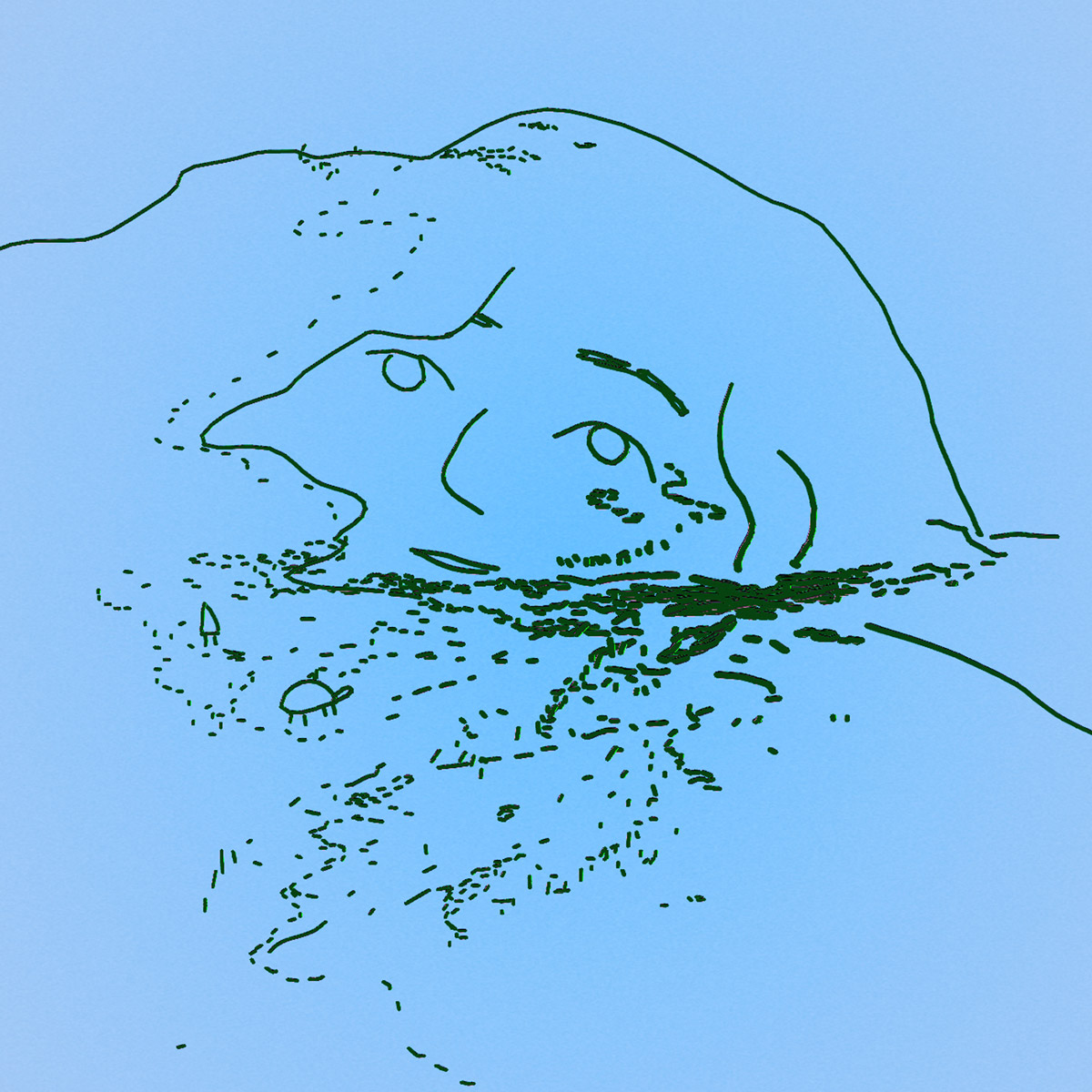
What do you want people to take away from it?
Create proximity and intimacy, and give you the feeling that you are taking part in a smooth adventure that brings people together for a good cause. And that listening and helping someone can actually make you feel good too.
In many ways your portfolio is wildly different from one project to the next, what is the common thread? Is there one?
Experimental process. Having fun doing it. Mary Poppins, Il était une fois la vie, Totall Recall.
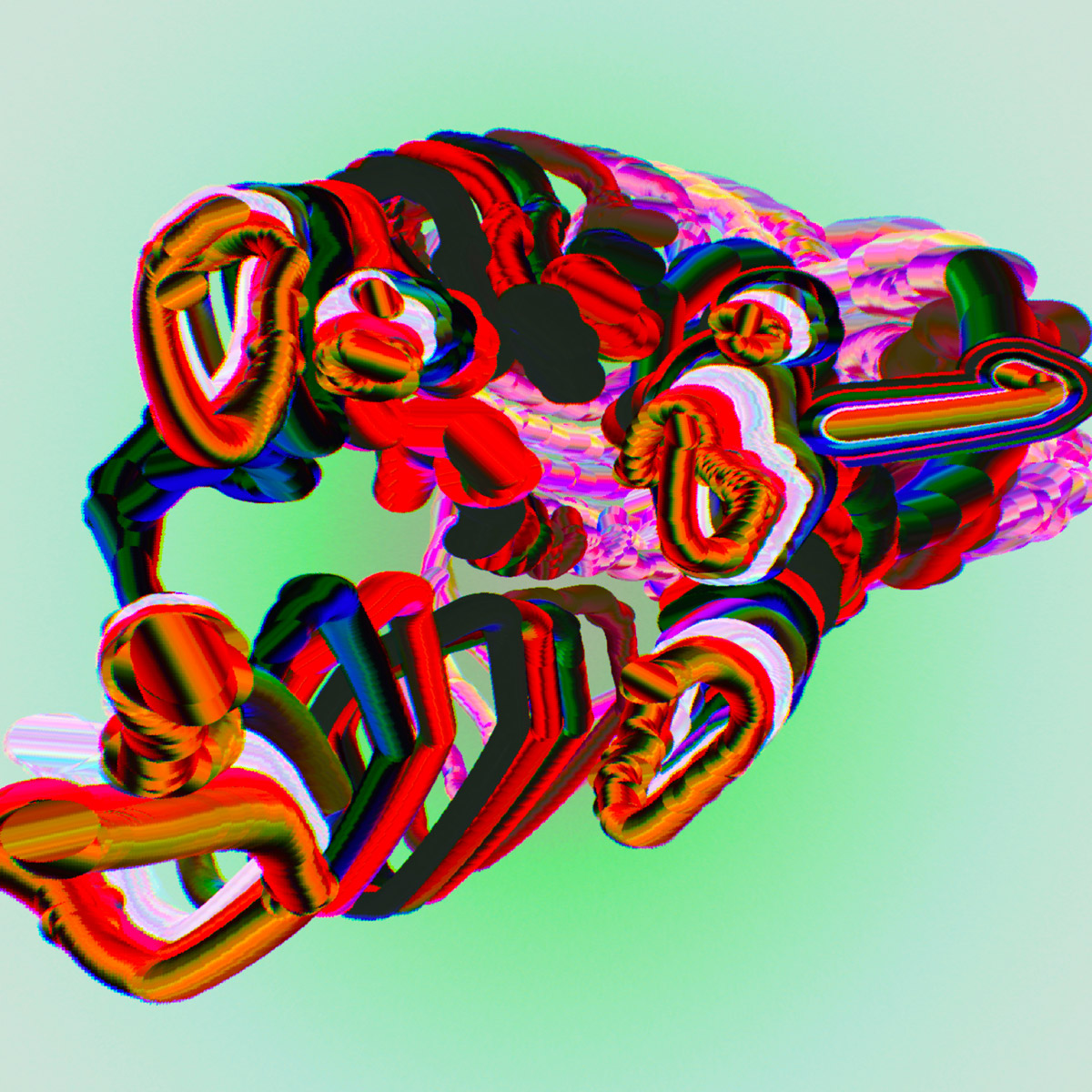
A random question for you because I think you might have an interesting perspective, what do you think about this idea of the “metaverse” or the future of the Internet? Are you excited about it? Are you dreading it?
I have a hard time tolerating a VR headset for more than 15 minutes, so it won’t be part of my reality until the physical interface is less clunky. For now, if I have the choice between a walk in the woods or being two hours in a virtual world it will be an easy choice for me.
I haven’t read that much about speculations around the metaverse so I’m really not knowledgeable but… as I mentioned, I’m a big fan of Sci-Fi and in particular William Gibson (father of the Cyberpunk genre). Neuromancer blew my mind (supposedly inspired The Matrix), and his Mona Lisa Overdrive / Peripheral / Agency books left deep prints of sensory depiction in my mind. I won’t talk about it too much but the way he creates deep sensory memories and empathy by seeing or feeling through someone or something else’s body vessel is quite unforgettable.
When I think of the metaverse I imagine beautiful worlds being created by amazing creative people, territories expanded with possibilities of technology. I also see people with power wanting to possess stuff/land to expand their estate. Worlds destroyed. Ruins of old worlds, people exploring those ruins… So you can tell that I don’t think the way we will behave in it will be so different from how we behave in real life, but I guess how we will perceive it and experience it might.
That would be amazing if the most honorable quality in the metaverse was to be a Super Empath, to be able to apprehend the mental or emotional state of other people. You could learn to become one by wearing someone’s virtual body vessel and by downloading its internet connectome map.
I’m excited and scared about it the same way as I am excited by young people who are more and more engaged in politics, social and environmental causes and are more and more tolerant with each other; and I’m also scared because what will happen in the coming years and in the future depends a lot on what we value in our leaders as a person. (Can you tell it’s late while I’m writing this?)
Yeah, it’s hard not to be both excited and scared about it. I usually end interviews asking these same two questions. What’s one thing you’d like to accomplish in the next year or so?
Something about philosophy. Write another story with a friendship in it. Learn how to do line drawing in a 3D engine and mess up with textures.
Do something for/with kids. Continue to learn new things to continue doing art.
What about one thing you’d like to accomplish in your lifetime?
Do art that helps people.
Check out Brainstream over on the NFB website!
Brainstream Main credits
Written and directed by Caroline Robert.
In collaboration with Édouard Lanctôt-Benoit (code), Mathieu Charbonneau (sound and music), and Vincent Morisset (Production Manager and consultant to the Director).
Performed by Sophie Shields-Rivard (EN) and Julianne Côté (FR)
Created by the studio AATOAA
Produced by the National Film Board of Canada
2025 Art & Photo Book Award
Wanna turn your art or photos into a book or a zine? Here’s your chance, we’re picking 9 people!
Learn moreJoin our Secret Email Club
Our weekly newsletter filled with interesting links, open call announcements, and a whole lot of stuff that we don’t post on Booooooom! You might like it!
Sign UpRelated Articles
